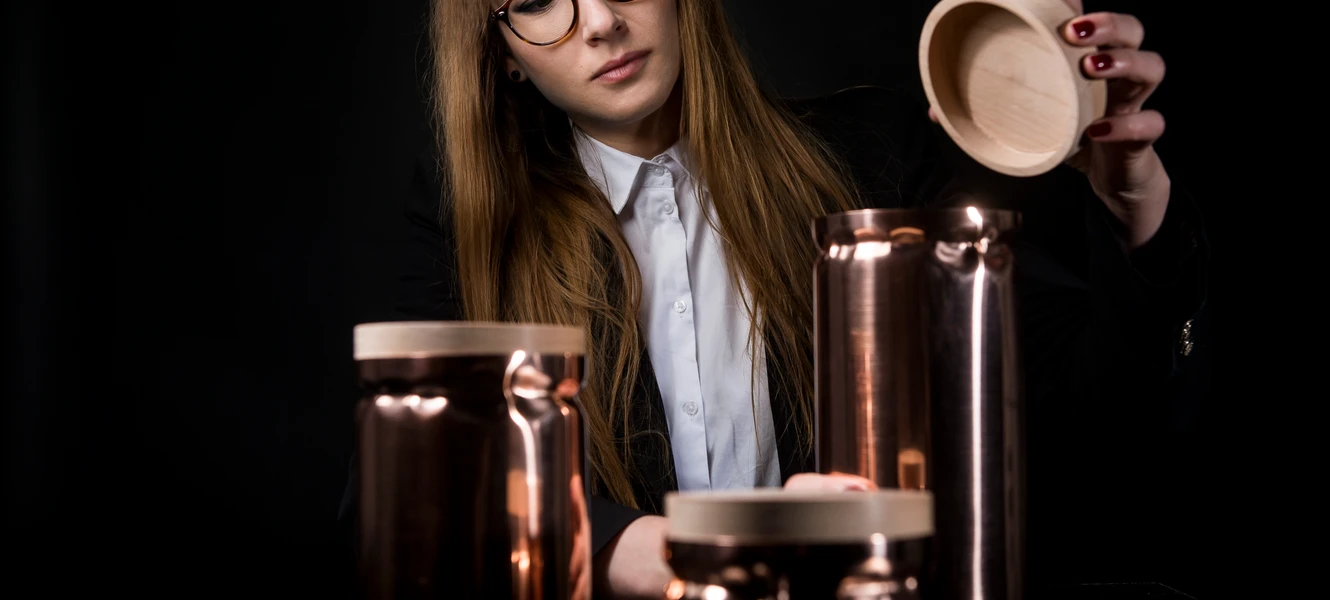
Preferably a little out of control
Industrial designer, Omayra Maymó wrestles with the streamlined uniformity of industrially designed objects and insists on bringing emotions and joy back into mass production.
”Over the last century our material surroundings have been characterized by a ‘perfect’ and ‘standardised’ industrial ideal. But change is on the way and consumers are rejecting the uniform expression. This makes new demands on mass productions, and in my project I want to assess whether it is possible to invent more expressive and meaningful industrially produced objects for everyday use,” explains Omayra Maymó, a recently graduated industrial designer.
An opening speech which sounds abstract, but when you see her graduation collection you better understand her mind set. GRASP consists of cone-shaped boxes that can also be used as vases. All parts have lids, and the box is shaped so that it looks as if it hugs the lid and hence keeps it in place. ENFOLD bowls resemble casts of randomly folded pieces of paper shaped out of round flat pieces of brass that carefully wrap around the things that are placed in the bowls; And finally the jug series PLEAT is made by adding an extra fold to a copper cylinder which in its simplicity emphasises that its function is a jug.
Fingerprints yes please
But why on earth tackle the exquisite everyday objects that will also function without the added bumps on the surface?
“The unique features of my objects are not added artificially. In fact, they could not function without the small interventions which occurred completely naturally in the process and the work with the materials,” Omayra Maymó explains:
“The techniques I have used and the random results it has produced are exactly what give the product its purpose: the cylinder that keeps the lid in place; the shape of the bowl that occurs naturally and the design of the jug spout.
My challenge was to recreate the special emotional value that develops between a consumer and a unique product – but recreate it in an industrial context, mind you. Typically the unique aspect occurs in hand-made products where the individual craftsman cannot control all aspects of the production – there will always be an element of uncertainty. That uncertainty is virtually eliminated in industrial production, because the purpose here is to be able to recreate the same object again and again with 100 per cent precision and control.
My project examines how it is possible to reintroduce what people love about handicrafts: imperfection, the small indications from the manufacturing process, the craftsman’s fingerprint or tool marks for example; in other words, lose some control because we then get products that have a history and its own life,” explains the designer, who is also trained as an architect.
And she knows what she is talking about. In her initial analyses for her project she collected 120 examples of industrial one-off pieces in a massive catalogue that explains the different expressions in handicraft and factory production respectively.
Designer emotions
The products are made in the soft metals bronze and brass because, other things being equal, it was easier to give each its distinctive characteristic. For the products are mass produced and hence all are alike, but at the same time Omayra Maymó has managed to introduce a certain freedom in the actual production process which means that each object does have subtle differences compared to the rest of the pieces:
“I have worked with three different production processes in order to make products with less control and more soul. We designers have the opportunity to influence the material world, and nobody has said that we must surrender to the existing technology and its standardised aesthetics. We are the ones who have the option of adding emotions and more meaning to our surroundings,” says the industrial designer.
In her project Omayra Maymó has collaborated closely with the Copenhagen design company New Works that manufactures designed everyday objects with an artistic touch.
“My challenge was to recreate the special emotional value that develops between a consumer and a unique product – but recreate it in an industrial context, mind you. Omayra Maymó, Industrial Designer”


